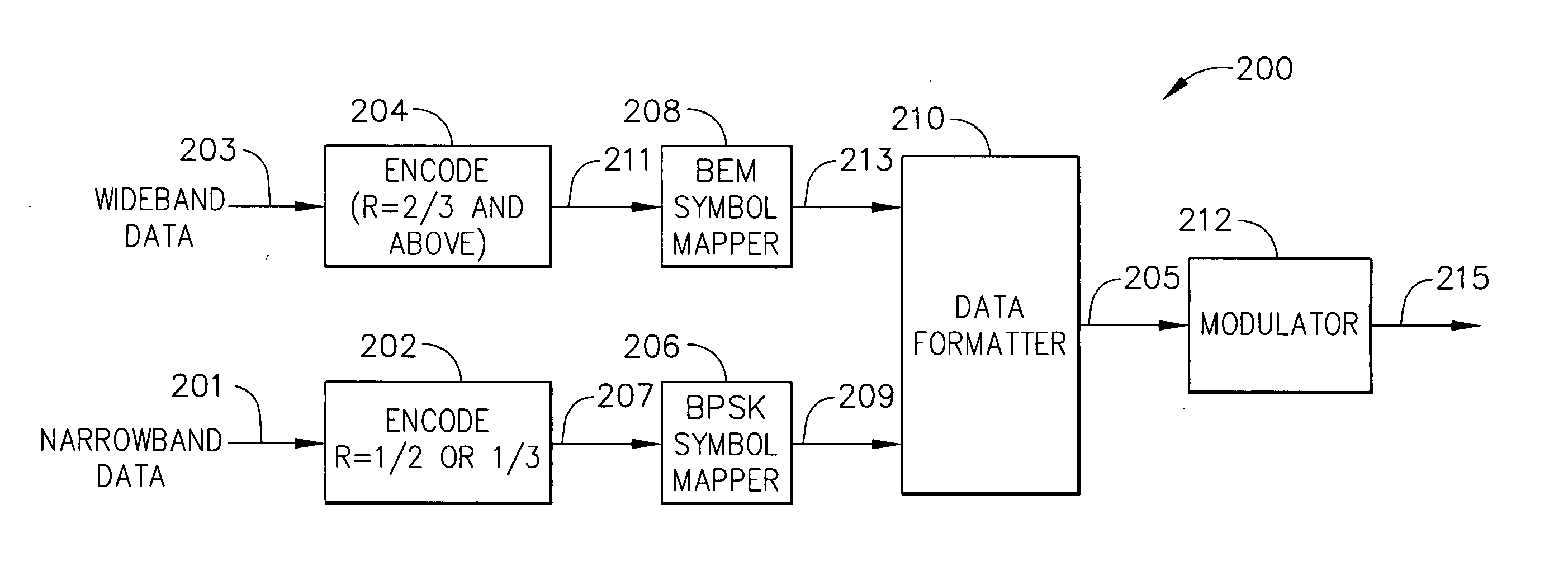High availability narrowband channel for bandwidth efficient modulation applications
a bandwidth efficient, narrowband technology, applied in multiple modulation transmitter/receiver arrangements, amplitude demodulation, multiplex communication, etc., can solve the problem of unsatisfactory type of link, unfavorable severe rain attenuation event powering through bem channel, and unfavorable bandwidth utilization. problem, to achieve the effect of increasing the relative availability of the narrowband channel
- Summary
- Abstract
- Description
- Claims
- Application Information
AI Technical Summary
Benefits of technology
Problems solved by technology
Method used
Image
Examples
example
[0040]FIG. 5 shows a graph 500 with signal-to-noise ratio (SNR) on the abscissa and bit error rate (BER) on the ordinate illustrating one example of rain fade margins for a narrowband channel—such as narrowband channel 112—at curve 502 and a wideband channel—such as wideband channel 114—at curve 504, in accordance with one embodiment of the present invention. The lettered items in FIG. 5 may be interpreted as follows: [0041] (A) Required BER for wideband BEM channel; [0042] (B) BEM SNR at required BER; [0043] (C) Nominal link SNR without rain; [0044] (D) Approximate rain fade margin for wideband BEM channel=(C)−(B); [0045] (E) Required BER for narrowband channel [note: could be above or below (A)]; [0046] (F) Narrowband SNR at required BER; [0047] (G) Receiver loop tracking dropout SNR [note: could be to right or left of (F)]; [0048] (H) Approximate rain fade margin for narrowband channel=(C)−max((F),(G)).
[0049] Referring to table 600 shown in FIG. 6, a particular example illustrat...
PUM
 Login to View More
Login to View More Abstract
Description
Claims
Application Information
 Login to View More
Login to View More - R&D
- Intellectual Property
- Life Sciences
- Materials
- Tech Scout
- Unparalleled Data Quality
- Higher Quality Content
- 60% Fewer Hallucinations
Browse by: Latest US Patents, China's latest patents, Technical Efficacy Thesaurus, Application Domain, Technology Topic, Popular Technical Reports.
© 2025 PatSnap. All rights reserved.Legal|Privacy policy|Modern Slavery Act Transparency Statement|Sitemap|About US| Contact US: help@patsnap.com



